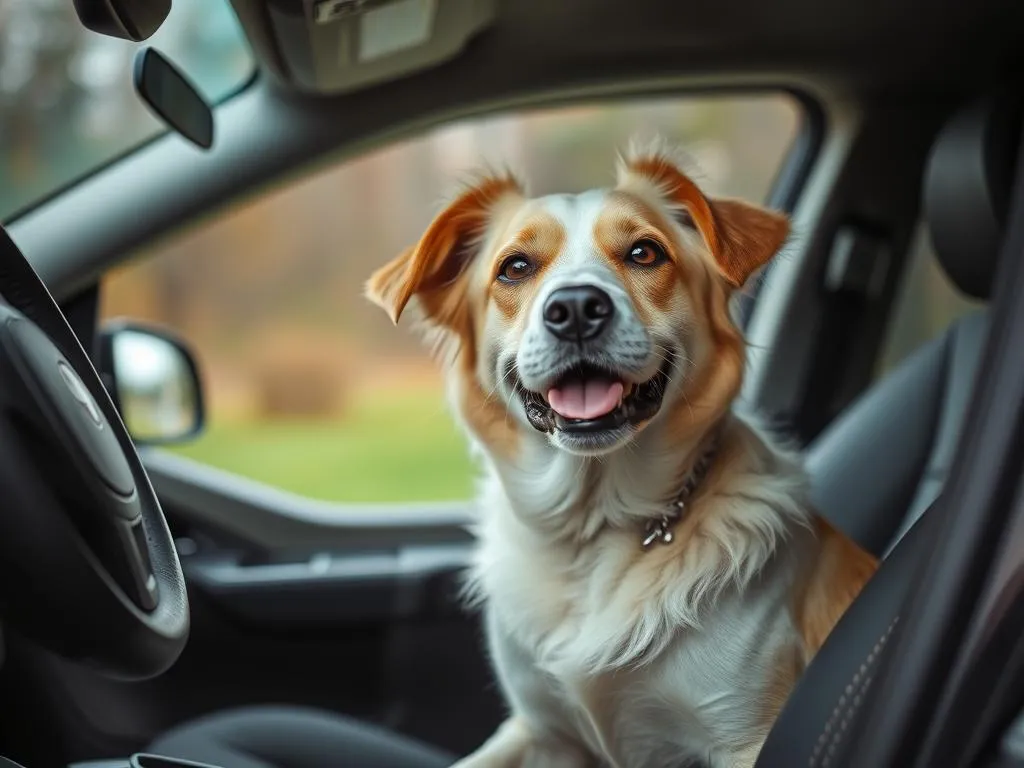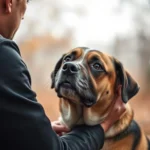
Introduction
Imagine embarking on a road trip, the windows down, the wind blowing through your hair, and your furry friend in the backseat. Suddenly, you glance back to see your dog panting heavily, tongue lolling out, and you wonder: why do dogs pant in the car? This common scenario raises important questions about our pets’ comfort and health during car rides. Understanding your dog’s behavior while traveling, particularly their tendency to pant, can offer insights into their emotional and physical state, ensuring a safer, more enjoyable journey for both of you.
In this article, we will delve into the various reasons why dogs pant in the car, from physiological factors to emotional triggers. We will also discuss how to recognize when panting is normal versus when it might signal distress or health concerns. By understanding these aspects, dog owners can take proactive steps to enhance their pet’s travel experience.
Understanding Dog Panting
What is Panting?
Panting is a natural behavior exhibited by dogs, characterized by rapid, shallow breathing with an open mouth. This behavior serves several purposes, most notably thermoregulation. Unlike humans, dogs do not sweat to cool down; instead, they rely on panting to release heat. However, not all panting is created equal.
Normal panting occurs during exercise, excitement, or warm weather, while excessive panting can indicate stress, discomfort, or health issues. Understanding the distinction is crucial for dog owners, especially during car travel.
Why Do Dogs Pant?
Dogs pant for a variety of reasons, which can be broadly categorized into physiological and emotional factors.
-
Physiological Reasons: Panting is primarily a cooling mechanism. When a dog gets hot, they pant to increase airflow to their lungs, allowing body heat to dissipate. Additionally, panting helps dogs take in more oxygen, which is crucial during physical exertion.
-
Emotional Reasons: Dogs also pant as a response to their emotional state. Stress, anxiety, and excitement can all trigger panting. For instance, a dog may pant in anticipation of visiting the vet or during a car ride to the park.
Factors Contributing to Panting in the Car
Temperature and Climate
One of the most significant factors influencing why dogs pant in the car is temperature. Cars can quickly become hot, even on mild days. The interior temperature can soar, creating an environment that is uncomfortable and unsafe for your dog. Dogs are particularly sensitive to heat, and excessive warmth can lead to heat exhaustion or heatstroke.
To combat this, ensure proper car ventilation and regulate the temperature. Keep windows cracked or use air conditioning to maintain a comfortable environment for your furry friend.
Anxiety and Stress
Car rides can be anxiety-inducing for many dogs. Common triggers include:
- Unfamiliar environments: New sights and sounds can overwhelm a dog.
- Motion sickness: Some dogs experience nausea, leading to stress and panting.
- Traveling in a crate or seatbelt: While these safety measures are essential, they can also create feelings of confinement.
Recognizing signs of stress beyond panting is critical. Look for behaviors such as whining, pacing, drooling, or trying to escape. These signals indicate that your dog is uncomfortable, and addressing the underlying issue is crucial for a pleasant travel experience.
Excitement and Anticipation
Conversely, excitement can also lead to panting. Dogs are often eager to arrive at their destination, whether it’s a trip to the dog park, a playdate, or even a visit to the vet (if they have positive associations). The anticipation of these experiences can trigger panting as dogs express their enthusiasm.
Understanding this dynamic can help owners manage their dog’s behavior during travel. If you know your dog gets excited, you might consider using calming techniques to help them settle during the journey.
Health Considerations
When Panting is Normal
It’s essential to differentiate between normal and concerning panting. Situations where panting is typical include:
- After vigorous exercise or play.
- On warm days or during heat exposure.
- In response to excitement or anticipation.
In these cases, a dog’s panting is generally not a cause for concern. Monitoring the duration and circumstances surrounding the panting can help you determine if it falls within the normal range.
When Panting is a Cause for Concern
Excessive panting can indicate distress or health problems. Be vigilant for the following signs:
- Prolonged panting: If your dog continues to pant even after resting or cooling down.
- Accompanying symptoms: Signs such as lethargy, vomiting, drooling, or difficulty breathing.
- Behavioral changes: If your dog becomes unusually aggressive or withdrawn.
These symptoms can signal potential health problems, including heatstroke, respiratory issues, or heart conditions. If you observe these signs, it’s crucial to consult a veterinarian promptly.
What to Do If Your Dog is Excessively Panting
If you notice your dog excessively panting during a car ride, take immediate action:
- Pull over safely: Stop the car in a safe location.
- Cool your dog down: Use water or a damp cloth to cool them off.
- Provide water: Offer them water to prevent dehydration.
- Monitor behavior: Keep an eye on your dog’s condition; if it does not improve, seek veterinary assistance.
Being proactive can prevent serious health issues and ensure your dog remains comfortable during travel.
Tips for Reducing Panting in the Car
Prepare Your Dog for Travel
Preparation is key to a stress-free car ride. Consider the following tips:
- Pre-trip training: Gradually acclimate your dog to the car environment through short trips. Start with familiar locations, gradually increasing the distance.
- Desensitization techniques: Reward your dog with treats and praise for calm behavior in the car. This helps create positive associations with travel.
Create a Comfortable Environment
Creating a comfortable space for your dog can significantly reduce anxiety and panting. Here are some suggestions:
- Temperature control: Ensure the car is at a comfortable temperature before starting the journey.
- Use of dog seat covers and crates: These can provide a familiar and secure space for your dog, reducing anxiety.
Use of Calming Aids
Consider incorporating calming aids into your travel routine. Options include:
- Natural calming aids: Products like pheromone sprays, calming treats, or supplements designed to reduce anxiety.
- Anxiety wraps: These can provide a sense of security for anxious dogs, helping to minimize stress during the ride.
Regular Breaks and Hydration
For longer journeys, taking regular breaks is essential. Here’s how you can manage this:
- Schedule breaks: Plan to stop every couple of hours to let your dog stretch, relieve themselves, and hydrate.
- Keep water available: Always have water on hand to keep your dog hydrated, especially in warm weather.
Alternative Solutions
Car Training Techniques
Training your dog to feel more comfortable in the car can significantly reduce anxiety and panting. Here are some effective methods:
- Reward-based training: Use treats and praise to reward calm behavior in the car, gradually increasing the time spent in the vehicle.
- Practice makes perfect: Regular short trips can help your dog grow accustomed to the car environment, ultimately reducing anxiety.
Professional Help
If your dog continues to struggle with anxiety while traveling, it may be time to seek professional assistance:
- Dog trainers or behaviorists: A professional can provide tailored training techniques and behavior modification programs to help your dog feel more secure during car rides.
Conclusion
Understanding why dogs pant in the car is vital for ensuring a safe and enjoyable travel experience for both you and your furry companion. By recognizing the difference between normal and excessive panting, identifying stressors, and implementing strategies to mitigate anxiety, you can create a more comfortable environment for your dog.
Ultimately, being attuned to your dog’s needs and behaviors will lead to happier travels and a stronger bond between you and your pet. Whether it’s a quick trip to the vet or a long-awaited road trip, your understanding of your dog’s behavior will make all the difference in their experience.









